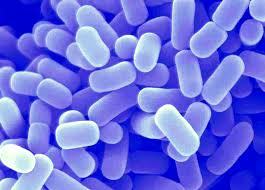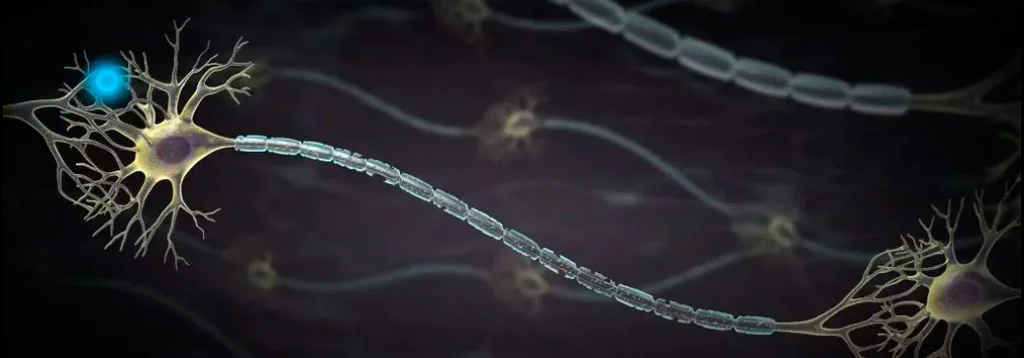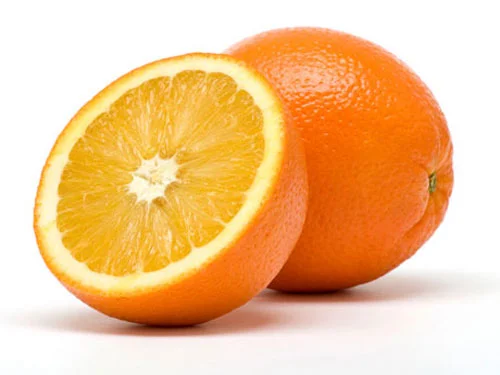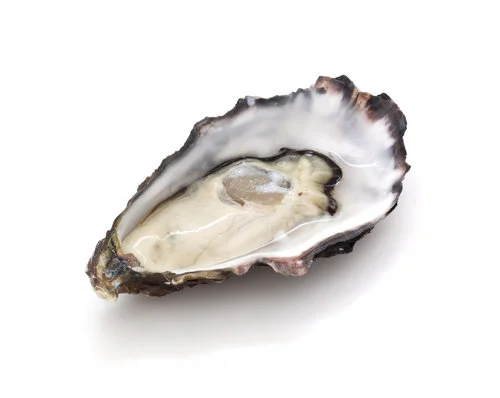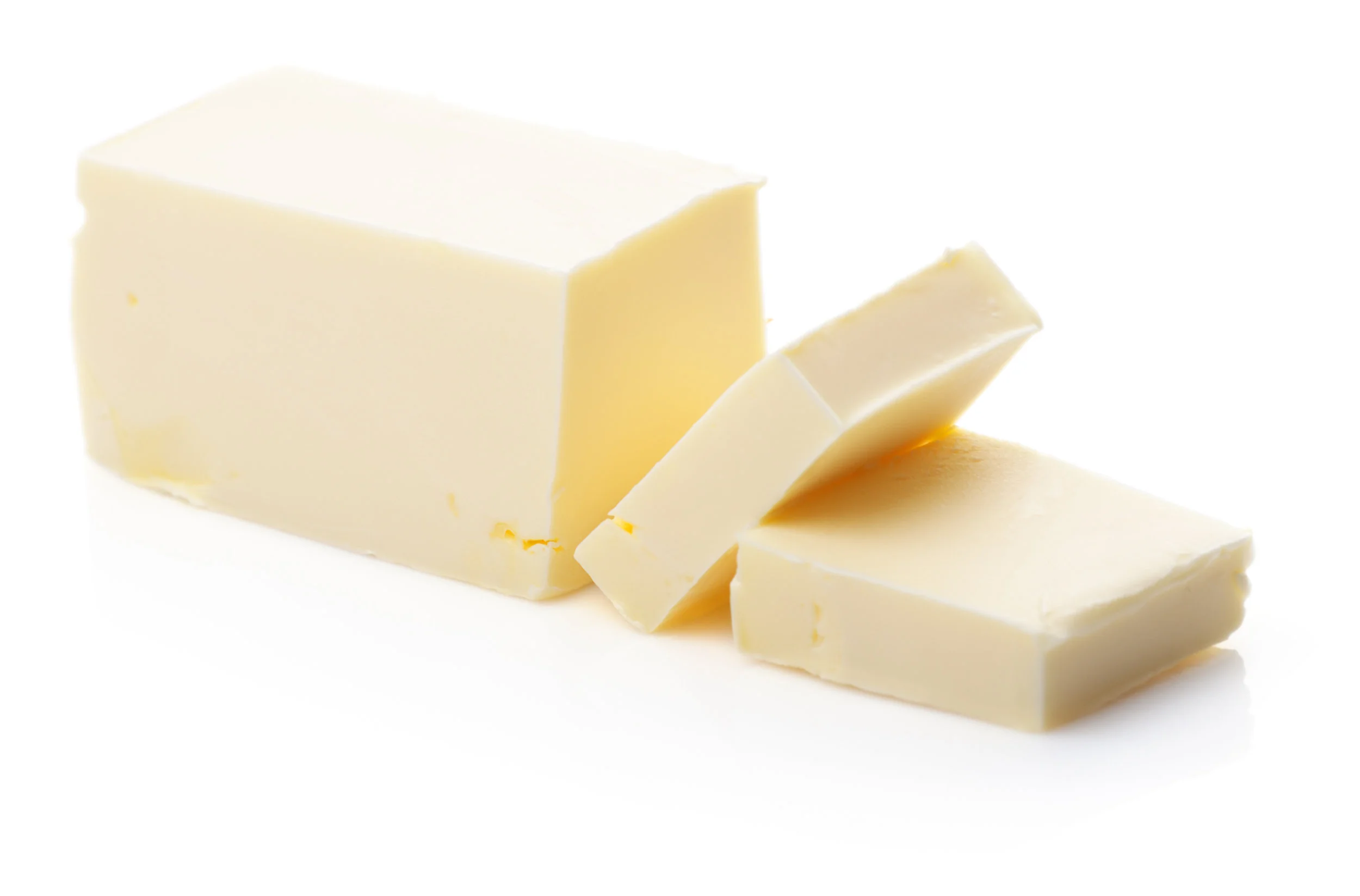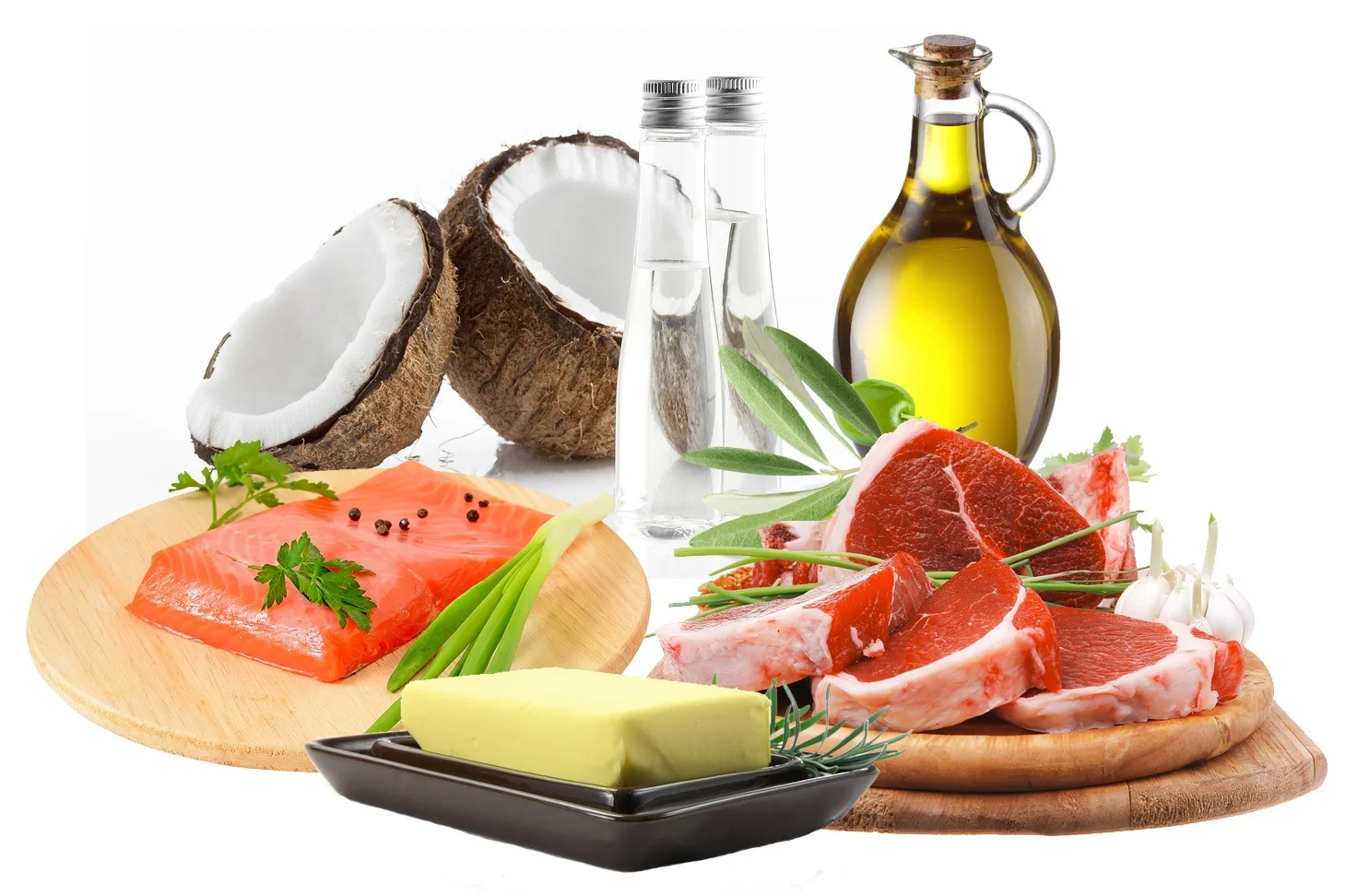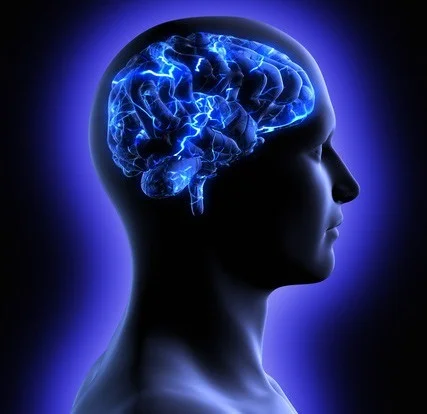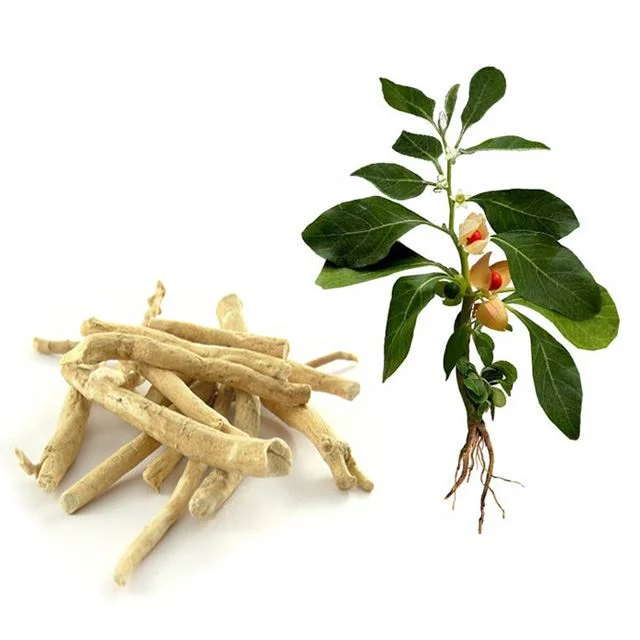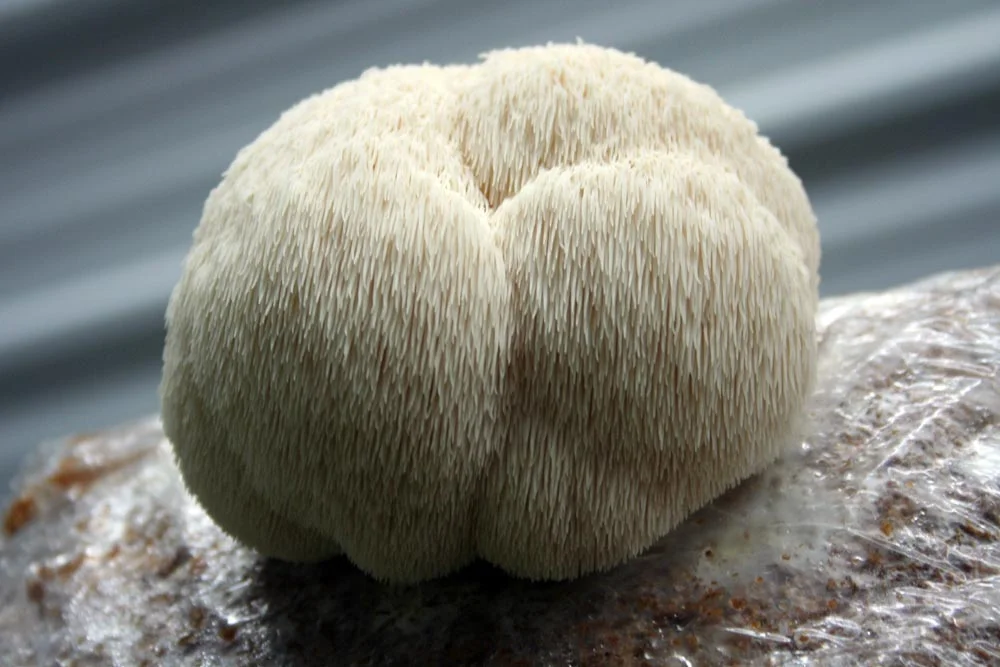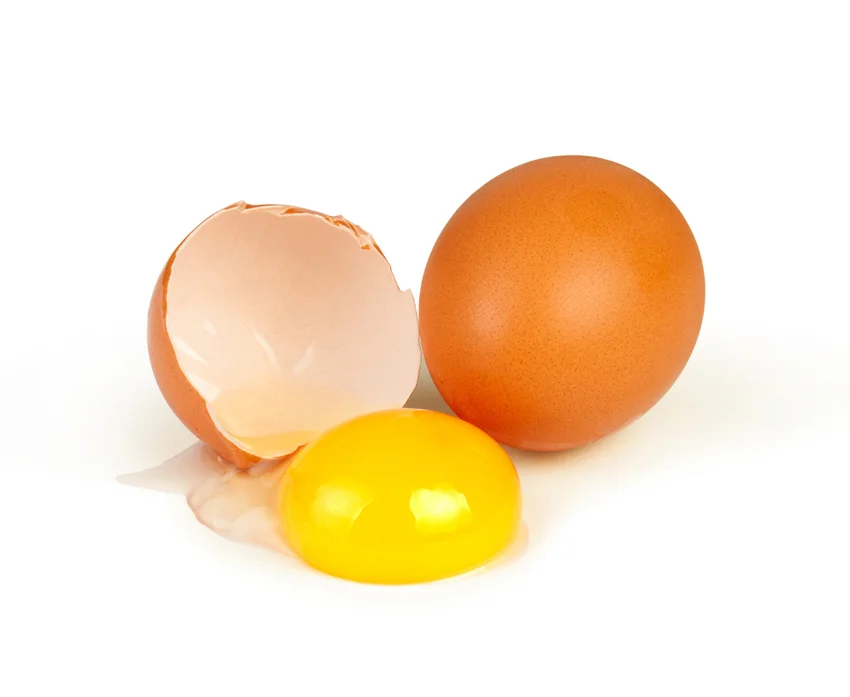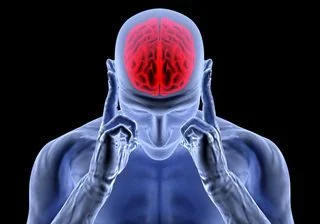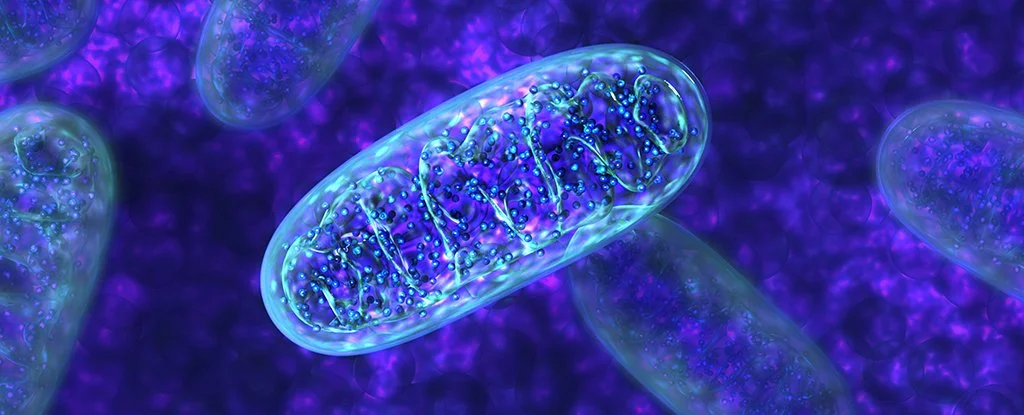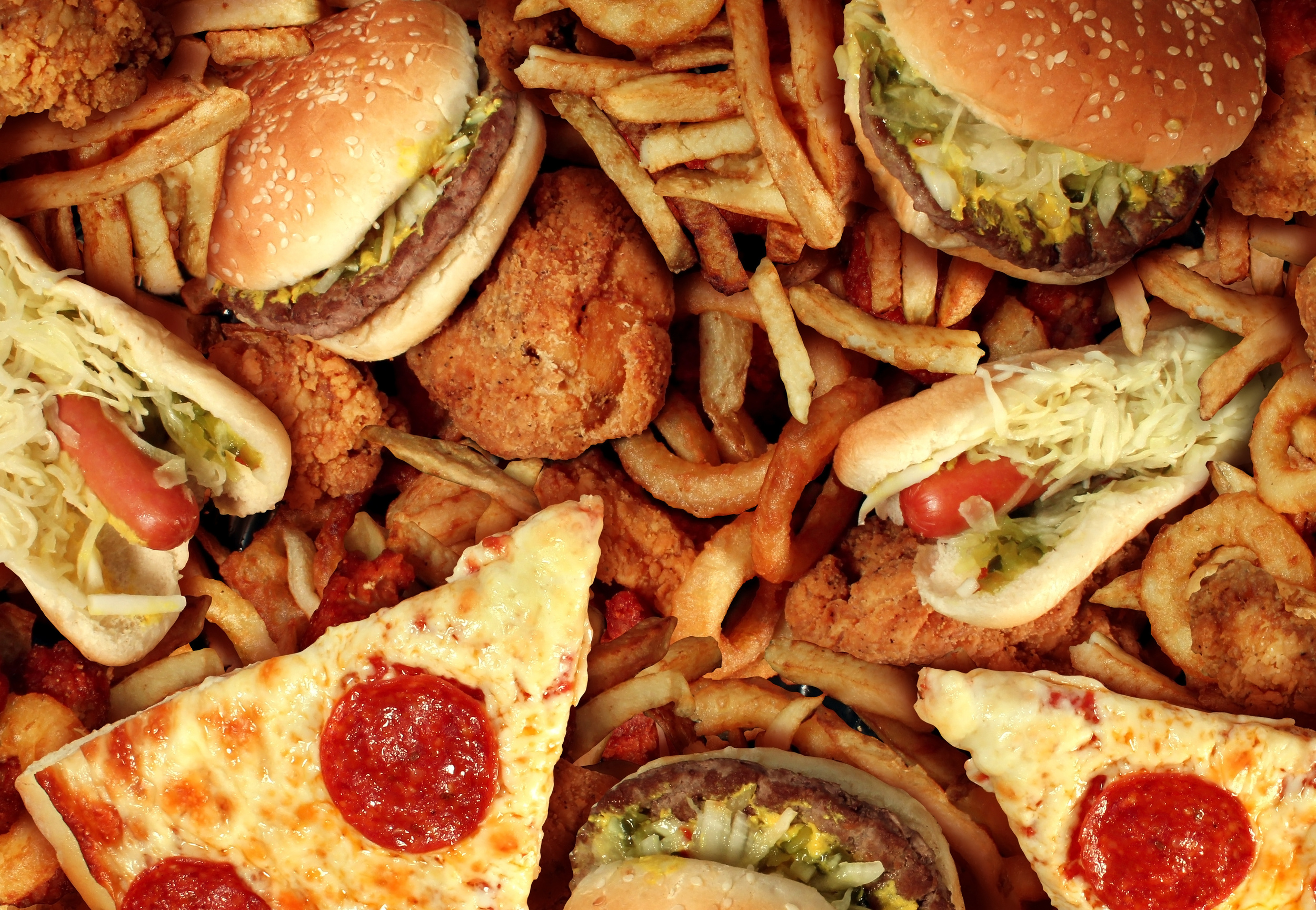Dopamine makes you happier, smarter, more productive, more creative, more focused, and more social.
Who doesn't want that?
There are many ways to increase dopamine naturally.
But what are the VERY BEST ways to do it?
This article gives you the answer.
It includes the 36 very best ways to increase dopamine levels in your brain.
It starts off with my 10 personal favourites.
And then offers 26 other great options.
Not only do they work, but many of them work very quickly.
Read on to learn more.
What Is Dopamine and What Does It Do in the Brain?
“Dopamine may be the secret to what makes us human – meaning awfully bright, able to plan ahead, and resist impulses when necessary.”
Dopamine influences almost every aspect of your life.
Dopamine is a neurotransmitter, meaning it’s a chemical messenger released by neurons (nerve cells) to “communicate” with other neurons (236).
Like all neurotransmitters, dopamine shuttles between cells and binds to receptors.
In the media and popular culture, dopamine is often promoted as the main pleasure neurotransmitter.
But dopamine actually appears to increase desire and motivation more than pleasure.
In fact, it’s often called the “motivation molecule”.
The brain includes several dopamine pathways, and they play a key role in reward, motivation, memory and attention (233-235).
So not surprisingly, dopamine significantly impacts human behaviour.
And research shows that naturally increasing dopamine levels can lead to numerous benefits, including:
Increased enthusiasm, motivation and drive to be productive, accomplish tasks and reach goals (165-179)
Reduced drug addiction and dependence (162-164)
Improved cognition function, learning, long-term memory and working memory (180-185)
Increased focus and concentration (186-190)
Increased creativity, both verbal and visual creativity (191-197)
Improved mood (198-200)
Reduced fear and improved confidence (201-204)
Increased social bonding and stronger relationships (oxytocin plays a role too) (205-208)
Increased tolerance to pain (209-211)
Conditions and Symptoms Associated with Low Levels of Dopamine in the Brain
“Low levels of dopamine make people less likely to work for things.”
Research shows that low dopamine levels are associated with a number of brain and mental health conditions and symptoms, including:
Addiction (216-217)
Depression, Apathy and Feelings of Hopelessness (225-226)
Parkinson’s Disease (213-215, 228)
Restless Leg Syndrome (229-230)
Attention-deficit Hyperactivity Disorder (218-220)
Social Anxiety (212)
Bulimia (223)
Chronic Fatigue Syndrome (224)
Toxic Mold Illness (227)
Traumatic Brain Injury (231-232)
Moodiness and Irritability
Procrastination
Perhaps you struggle with one of these conditions or symptoms.
The good news is that you’re not powerless.
You can naturally increase your dopamine levels and recapture your zest for life.
All you need to do is implement some of the natural strategies below.
They can significantly improve your motivation, focus and mood.
They have helped me, and they can help you too.
Let’s jump into them.
My Top 10 Favourite Ways to Naturally Increase Dopamine Levels in the Brain
1. Sunlight and Vitamin D
Exposing yourself to sunshine is one of the best natural ways to increase dopamine levels in your brain.
And it’s my personal favourite.
Research shows that sunlight increases dopamine release (4-5).
I personally get sunlight every single day during the spring and summer months to increase dopamine.
It’s important to get the sunlight in your eyes to trigger the release of dopamine.
So make sure you don’t wear contacts, glasses or sunglasses when you go outside. This way, you’ll get a bigger dopamine boost.
It’s especially important to do this in the morning because it sets your circadian rhythm (3).
During the winter months, when there isn't enough sun, I use a Vitamin D sunlamp.
Vitamin D is a fat-soluble vitamin that your skin synthesizes when exposed to the sun.
But most people still don’t get enough Vitamin D from the sun.
Researchers believe that 50% of people are at risk of Vitamin D deficiency (6).
Having a deficiency in Vitamin D leads to lower dopamine levels, but treatment with Vitamin D3 enhances dopamine release (1-2).
So at the very least, you should take a Vitamin D supplement if you’re deficient. I take some Vitamin D3 in supplement form, depending on my levels.
It's important to test and monitor your Vitamin D levels before and after supplementing with it.
2. Vagus Nerve Stimulation
The vagus nerve is the longest cranial nerve in your body and part of your parasympathetic “rest and digest” nervous system.
Research shows that chronic impairment of vagus nerve function leads to the inhibition of dopamine in the brain (7).
But vagus nerve stimulation reverses a dysregulated dopamine system (8).
Read this article for 13 ways to stimulate your vagus nerve.
Deep breathing with the EmWave2 device is my favourite way.
3. Low-Level Laser Therapy
Low-level laser therapy (LLLT), or photobiomodulation, is a treatment that can improve your brain function and support your dopamine levels.
LLLT involves the use of low-power lasers or light-emitting diodes (LEDs) that emit red and infrared light.
You can shine this light on your head, it penetrates the skull and stimulates your brain cells.
This helps your brain function much better.
Dr. Norman Doidge, a psychiatrist and researcher who teaches at the University of Toronto, discusses the amazing effects of LLLT in his book The Brain’s Way of Healing.
Research shows that LLLT significantly increases the secretion of dopamine in the brain (12).
Several studies also show that LLLT is neuroprotective and protects dopaminergic brain cells from degeneration (13-21).
Because of this, researchers say LLLT is a promising therapeutic strategy for dopamine-related diseases such as Parkinson’s disease (12).
I previously wrote about my experience with low-level laser therapy here.
You can use this device and shine the red and infrared light on your forehead for 5 minutes every day. You can also shine it on other parts of your head and on your entire body, including on your thyroid, thymus gland and gut. I have experienced incredible benefits from doing this.
If you want a more compact device, you can use this smaller and more convenient device and shine it on your forehead.
I’ve also used the Vielight Neuro Duo, which is a transcranial-intranasal headset with 810 nm of near infrared light. It penetrates deeper into brain tissue and is absorbed better by the central nervous system. If you decide to try a Vielight device, you can use the coupon code JORDANFALLIS for a 10% discount
You can learn about how I use these devices in my LLLT article. I highly recommend reading it if you want to try this.
4. Rhodiola
Rhodiola is one of the most popular herbs in the world used to increase physical and mental performance.
It’s a Traditional Chinese and Scandinavian herb, and it’s also sometimes called golden root or arctic root.
I previously wrote about rhodiola here.
Researchers have found that rhodiola stimulates dopamine receptors and inhibits the enzymes that break down dopamine in the brain (22).
It also increases the amount of dopamine precursors that can pass the blood brain barrier (23).
I used to take a rhodiola supplement. But I don't need to anymore. I used to take it when I wanted to boost my energy and cognitive function.
5. Coffee
Drinking coffee is another great way to boost dopamine levels.
Research shows that caffeine increases the release of dopamine in the brain (26-27).
Other studies have found that it also enhances dopamine signaling and increases dopamine receptors (24-25).
I usually drink one cup of coffee most mornings. I also sometimes take pure caffeine tablets before a workout.
Sometimes people find that coffee makes them feel terrible and jittery.
This might be due to the quality of the coffee.
I find that low-quality, non-organic coffee makes me feel terrible.
In fact, cheap coffee feels like it lowers my dopamine.
Most people can tolerate regular coffee just fine.
But if it makes you feel sick, consider trying a higher-quality coffee, which I can tolerate just fine, or simply take pure caffeine, and see how you feel. You may feel better than if you consumed low-quality coffee.
Coffee and caffeine can disrupt sleep though, so make sure you don’t drink it in the evening close to bed. Some people like me are really sensitive and have to stop drinking it very early in the day so that it doesn’t disrupt their sleep.
I have my last cup sometime between 10 in the morning and noon. If I have it any later than that, it disrupts my sleep and don't feel as good the next day.
Lastly, it's also a good idea to try to consume the whole coffee fruit, instead of just coffee or pure caffeine.
Traditionally, the coffee bean is extracted from the coffee fruit for roasting. And the surrounding fruit is discarded.
But that’s a problem because the coffee fruit contains several healthy compounds not found in coffee beans themselves.
And researchers have found that consuming whole coffee fruit concentrate can significantly enhance cognitive functioning.
That’s why I included it in the Optimal Brain supplement.
6. Uridine
Uridine is a natural compound commonly found in beer.
I definitely don’t recommend drinking beer, but supplementing with pure uridine can protect the brain, enhance cognition, and increase mood and motivation.
Research shows that uridine significantly increases the release of dopamine and elevates dopamine levels (29-32).
It’s important to note that uridine in food is not bioavailable, and there isn’t any foods that have been shown to increase plasma levels of uridine unfortunately (28).
I used to take a uridine supplement sublingually, usually before bed. But I don’t need to do that anymore because I’ve recovered my health and take far fewer supplements that in the past.
7. Cold Exposure
Exposing yourself to cold can also increase your dopamine levels naturally.
Researchers have found that cold water immersion increases dopamine by 250% (43-44).
I take a cold shower every day.
During the winter, I’ll also go outside for short periods of time with hardly any clothes. It boosts my dopamine and increases my motivation.
You don’t have to be that extreme though.
You can start by finishing your next shower with one minutes of cold water.
See how it feels, and then over time, increase the amount of time you turn off the hot.
I can be a bit painful.
But the beneficial effects end up being worth it.
Another way is to stick your face, hand or foot in ice cold water.
Or you can try cold plunges, cold baths and even cryotherapy if you want!
Find what works best for you and do it regularly.
8. Meditation
Meditation is my favourite daily activity.
And research shows that it's linked to increases in dopamine (46-48).
In one study, researchers used brain scan imaging to confirm that meditation naturally increases dopamine release by 65% (45).
It likely has these effects by stimulating the vagus nerve.
If you want, you can use the Muse headband to meditate. It gives you real-time feedback while you meditate. It makes meditation a lot more fun and tolerable.
I previously wrote about it here, and you can get it through the Muse website.
9. Ginseng
There are two types of ginseng that increase dopamine – American Ginseng and Siberian Ginseng.
American Ginseng has been shown to improve attention and cognitive processing by increasing levels of dopamine in the brain (93-94).
Researchers have also found that Siberian Ginseng has antidepressant effects by significantly elevating dopamine levels in the brain (95).
10. Citicoline and Alpha GPC
Citicoline (also known as CDP-Choline) is the best supplemental form of choline.
Choline is an essential nutrient for optimal brain health, but unfortunately that most people don’t consume enough of it.
Why?
Because very few foods in the Western diet contain it.
Citicoline has been shown to enhance the synthesis of dopamine, increase the release of dopamine, and increase the density of dopamine receptors in the brain (136-142).
It also protects brain cells that release dopamine, which then prevents a reduction in dopamine (143).
Alpha GPC is another excellent form of choline that has been shown to increase dopamine levels in the brain (144).
Citicoline and Alpha GPC significantly improve my focus and mental energy. That’s why they are both included in the Optimal Brain supplement.
You can also find some choline in beef liver and egg yolks, but it’s better to take Citicoline and Alpha GPC because you get noticeable and immediate benefits.
Make sure you read this article to learn more about the remarkable benefits of Citicoline.
And make sure you read this article to learn more about the benefits of Alpha GPC, the optimal dosage, and the best way to take it.
Other Effective Ways to Naturally Increase Dopamine Levels in the Brain
11. Take Dopamine Precursors
You can also increase your dopamine levels by giving your body the raw materials to create dopamine.
It’s first important to understand that dopamine is created within the body from the amino acid Phenylalanine (149).
Phenylalanine is an essential amino acid, meaning that your body cannot create it, and you must obtain it from your diet.
Phenylalanine is converted into Tyrosine, which is converted into L-Dopa, which is then finally converted into dopamine (150).
Vitamin B6 and iron are two nutrients that are needed for this conversion to take place.
Both phenylalanine and tyrosine can be obtained from protein-rich foods.
Here are some healthy sources:
Chicken
Beef
Turkey
Seafood
Eggs
Bananas
Almonds
Avocados
Pumpkin seeds
Sesame seeds
These foods are included in my Free Grocery Shopping Guide for Optimal Brain and Mental Health.
You can also supplement directly with Phenylalanine, Tyrosine and/or L-Dopa, along with Vitamin B6 and iron.
Research shows that supplementing with these dopamine precursors can enhance cognitive performance by increasing dopamine levels in the brain (151-155).
Mucuna Pruriens, a tropical plant commonly used in Ayurvedic medicine, is good source of L-DOPA and has been shown to increase dopamine levels in the brain (156-161).
In my experience, Tyrosine and Mucuna Pruriens can sometimes be too stimulating and increase anxiety in some people.
So I prefer DL-Phenylalanine because it has other mental health benefits besides increasing dopamine, and can actually reduce anxiety.
12. Probiotics
Research suggests that certain probiotics can also increase dopamine.
One study found that the probiotic species Lactobacillus plantarum significantly increases dopamine.
Researchers concluded that daily intake of Lactobacillus plantarum may be able to help treat neuropsychiatric disorders (36).
Another study found that Lactobacillus rhamnosus increases dopamine in the frontal cortex (37).
I created the Optimal Biotics supplement so that my readers can support their dopamine levels and mental health.
You can also read this article for 4 other ways to increase your good gut bacteria.
And if you struggle with anxiety, here are 7 other probiotic strains that can help.
13. Acetyl-L-Carnitine
Acetyl-L-carnitine (ALCAR) is a special form of the amino acid carnitine that helps reverse neurological decline and supports mitochondria function in the brain.
It’s often used as a natural brain booster because it provides support to brain cells, enhances cognition, and increases alertness.
It’s also been shown to help reduce chronic fatigue and improve mood.
So not surprisingly, researchers have also found that it increases dopamine output in the brain (42).
I find that it gives me a big boost in mental energy and cognitive resilience.
ALCAR is included in the Optimal Brain supplement.
Make sure you read this article to learn more about the remarkable benefits of ALCAR.
14. Acupuncture
Acupuncture is an alternative treatment that has been shown to increase dopamine levels in the brain.
Researchers have found that acupuncture increases the production of dopamine in the brain by stimulating the vagus nerve (9).
Other studies show that acupuncture enhances the availability of dopamine in the brain and normalizes the release of dopamine during withdrawal (10-11).
I really like auricular acupuncture.
Auricular acupuncture is when needles are inserted into ear.
It really helped me when I came off psychiatric medication. So I recommend finding a practitioner that provides it if you’re trying to get off medication as well.
In my experience, ear acupuncture is more effective than regular acupuncture. I don’t really know why, I’ve just personally noticed more benefits from ear acupuncture.
I also use an acupuncture mat at home to relax before bed.
15. Ginkgo Biloba
Ginkgo Biloba is a plant that has been used for thousands of years to treat a number of health problems.
It’s one of the most popular natural supplements in the world, and it’s even prescribed by doctors in Germany.
It’s most commonly used to improve brain health because it’s been shown to increase brain blood flow and improve memory and attention in both healthy and unhealthy individuals. It also improves mood and mental energy, and even reduces the risk of dementia and Alzheimer’s disease.
Researchers have also discovered that it significantly increases dopamine levels in the brain (33-34).
It increases the number of dopaminergic neurons in the brain as well (35).
Ginkgo Biloba is included in the Optimal Brain supplement.
16. Pregnenolone
Pregnenolone is a hormone naturally produced by the body.
But it can also be taken as a supplement.
It helps form almost all other steroid hormones in the body, including DHEA, progesterone, testosterone, estrogens, and cortisol.
So it’s very important.
And since hormones affect brain health so much, it’s been shown to enhance memory and reduce stress-induced fatigue.
Research shows that it also increases dopamine release in the brain (38).
Whenever I took pregnenolone, it gave me a big boost in energy and supported my brain function. It definitely works. But when I took it everyday, it started to make me angry and irritable for some reason. So I don’t take it anymore, especially since my hormones are balanced and optimal now.
17. Intranasal Insulin
Insulin is a hormone that significantly affects brain function.
Researchers have found that it passes the blood-brain barrier and acts on insulin receptors directly within the brain.
Unfortunately, many people today develop insulin resistance within the brain.
When this happens, there is a reduction in dopamine.
Research shows that insulin resistance within the brain alters normal dopamine functioning, leading to depression and anxiety (40).
So in a new therapeutic approach, commercially-available insulin (Novalin R) is being prepared and added to nasal spray bottles, and sprayed and inhaled through the nose to support the brain and mental health.
Intranasal insulin has been reported to significantly enhance memory, increase mental energy, reduce brain fog, improve mood, and lower anxiety and stress levels.
One possible mechanism is by increasing dopamine levels.
One study found that insulin enhances dopamine release in the brain (39).
Another study found that intranasal insulin is neuroprotective and protects dopaminergic brain cells from damage (41).
If you’re interested in learning more about intranasal insulin, I previously wrote a full article about it. You can read that here.
18. Forskolin
Forskolin is a natural herb historically used in Ayurvedic medicine. It’s been used for hundreds of years to treat various conditions and diseases.
The herb comes from the roots of the Indian coleus, which is a tropical plant.
Researchers have found that it stimulates the conversion of tyrosine to dopamine and enhances the release of dopamine (49, 51).
Other studies show that it can upregulate dopamine receptors (50, 52-56).
I don’t take it anymore. But when I did take it, I noticed an increase in mental energy and clarity.
19. Standing
One of the best hacks for your brain is simply standing more often.
Researchers have found that prolonged, uninterrupted sitting leads to fatigue and lower dopamine levels (57).
I have a standing desk so that I’m not sitting all the time while working.
20. Iron
Iron is a trace mineral found in every living cell in our bodies.
It carries oxygen to all parts of your body, and low levels can leave you feeling tired, pale and irritable.
Research shows that iron plays a key role in the regulation of dopaminergic neurotransmission, and iron deficiency can lead to lower dopamine levels (58).
It’s definitely optimal to just get your iron from food.
You can also make sure you get enough iron simply by taking grass-fed liver capsules.
Beef liver is one of the best sources of iron, but I don’t like the taste, so I take the capsules.
Other good sources of iron include:
Spirulina
Dark chocolate
Spinach
Sardines
Pistachios
Raisons
These foods are included in my Free Grocery Shopping Guide for Optimal Mental Health.
21. Salt
Salt is another tasty, natural way to boost your brain’s dopamine levels.
Researchers have found that dietary salt intake increases dopamine levels (60).
22. Theacrine
Theacrine is a natural compound that can increase energy, focus and mental clarity, and improve mood and motivation.
It’s a small alkaloid molecule found in certain fruits and plants. It’s most commonly found in a Chinese tea known as kucha.
Theacrine’s chemical structure is similar to caffeine. In fact, it’s considered a “new alternative” to caffeine because it activates similar pathways in the brain.
Researchers have found that theacrine acts through the dopamine system to provide a stimulant effect (66).
It activates dopamine receptors, which increases motivation and wakefulness (67).
In my experience, theacrine is a good replacement for coffee. It works and feels similar to caffeine, but it has a longer half life and less of a tolerance. It’s also less likely to disrupt sleep (61-63).
I sometimes take a theacrine supplement when I feel like taking a break from coffee and caffeine.
You can also take them together for even better results. Research shows that theacrine and caffeine are more effective when taken together because caffeine increases the bioavailability and positive effects of theacrine (64-65).
23. Exercise
Not surprisingly, exercise is another natural way to increase dopamine levels in your brain.
Plenty of research shows that daily exercise leads to increased dopamine neurotransmission, including increased dopamine release and increased dopamine receptor expression and binding (70-73).
Exercise also slows the break down of dopamine and prevents the loss of dopaminergic brain cells (71).
Besides boosting dopamine levels, exercise can also stimulate the vagus nerve, promote neurogenesis and increase blood flow to the brain.
Many experts recommend exercise as their number one piece of advice for optimal brain health.
Exercise can be a big chore for a lot of people, so I recommend finding some sort of sport or aerobic activity that you enjoy. That way you won’t get sick of it and you’ll exercise regularly.
24. Omega-3 Fatty Acids
Omega-3s fatty acids are the highest quality fats for the brain.
Eating more of them is one of the greatest steps you can take to promote optimal brain and nervous system functioning, and boost your dopamine levels.
In one study, researchers fed animals omega-3 fatty acids, and they found that the animals had 40 per cent higher levels of dopamine in the brain than animals that didn’t receive omega-3 fatty acids (69).
The researchers also noted a reduction in the enzyme that breaks down dopamine, and greater binding of dopamine to the dopamine receptors (69).
Research also shows that omega-3 fatty acids can help restore normal dopamine release after traumatic brain injury (68).
It’s important to eat enough omega-3 fatty acids through your diet because they are essential fats that your body cannot produce itself.
Omega-3 fatty acids are found primarily in cold water fish, including:
Salmon
Black cod
Sablefish
Sardines
Herring
These foods are included in my Free Grocery Shopping Guide for Optimal Mental Health.
Unfortunately, most people don't consume enough omega-3 fatty acids through their diet.
That’s why I sometimes recommend supplementing with krill oil, a special kind of fish oil that contains the essential omega-3 fatty acids.
25. Touch and Massage
Interpersonal touch is another natural way to increase your dopamine levels.
Researchers have discovered that touch significantly increases dopamine release in the brain (74-76).
This can include kissing, cuddling, stroking, tickling, hugging and sex.
But it can also include massage therapy.
Studies have shown that massage therapy increases dopamine by 31% on average (77).
This is one reason why I regularly get a massage from a massage therapist.
Massage also reduces cortisol, increases oxytocin, and stimulates the vagus nerve.
26. Tea and Theanine
Tea has also been shown to increase dopamine levels in the brain.
This includes both green tea and black tea (79-83).
Both green tea and black tea contain theanine, an amino acid.
Theanine has also been shown to cross the blood-brain barrier and significantly increase the release of dopamine in the brain (78, 84-85).
I sometimes take theanine alongside my morning coffee. It’s calming and cancels out the jitters of caffeine.
This anti-anxiety supplement contains theanine.
27. Intermittent Fasting
Fasting allows your digestive system to take a break and triggers the release of hormones and neurotransmitters, including dopamine.
Researchers have found that intermittent fasting leads to higher levels of dopamine by increasing dopamine release and enhancing dopamine action (86-89).
It also reduces age-related loss of dopamine receptors (90).
I often eat all my food for the day within an 8-hour window, and then fast for the rest of the day.
The best way to start fasting is by eating dinner around 6, not eating anything after that before bed, and then eating a regular breakfast the next day. That should give you about 12-14 hours of fasting time.
28. Taurine
Taurine is an organic compound found in food, particularly meat and seafood. It has a wide variety of health benefits.
It can cross the blood-brain barrier and elevate dopamine levels in the brain (91).
Taurine is included in the Optimal Calm supplement.
29. Magnesium
Magnesium is an essential mineral.
Unfortunately, a lot of people are deficient.
This is a shame because it plays a role in more than 300 biochemical reactions in your body, and it’s absolutely necessary for optimal neurotransmitter activity.
Magnesium has antidepressant effects, and one reason for this is because it increases dopamine activity in the brain (92).
There are a number of things you can do to make sure you’re getting enough magnesium.
First, make sure you’re eating magnesium-rich foods on a regular basis, including:
Spinach
Chard
Pumpkin seeds
Almonds
Avocado
Dark chocolate
Bananas
These foods are included in my Free Grocery Shopping Guide for Optimal Mental Health.
You can also increase your body’s intake of magnesium by taking Epsom salt baths.
Supplementation is also a good idea for most people.
Magnesium is included in this supplement.
30. Folate
Folate (Vitamin B9) is an essential B vitamin that plays a key role in methylation, one of the most important processes in your body and brain for optimal energy and nervous system function.
Researchers have found that if you are depressed, you likely have lower levels of folate circulating in your blood, and people with low blood folate are at greater risk for developing depression.
One reason for this is because folate is absolutely necessary for the production and synthesis of dopamine in the brain (99-100).
When you have low folate levels, you will also have lower dopamine levels because your body can’t produce dopamine efficiently, and this contributes to depression (101).
Good dietary sources of natural folate include:
Leafy greens
Asparagus
Broccoli
Cauliflower
Strawberries
Avocado
Beef liver
Poultry
These foods are included in my Free Grocery Shopping Guide for Optimal Brain and Mental Health.
Folate also lowers homocysteine levels.
31. St. John’s Wort
St. John’s Wort (Hypericum Perforatum) is a natural medicinal herb with antidepressant effects.
A 2015 meta-analysis concluded that it is as effective as standard antidepressant pharmaceuticals for treating depression and has fewer adverse effects (105).
A number of studies have also shown that it significantly increases the release of dopamine and increases dopamine levels in the brain (106-110).
One study shows that it increases dopamine in the prefrontal cortex by 40% after one hour (106).
I took a St. John’s Wort supplement years ago for my depression. It helped me, but I eventually stopped taking it and fixed the true, underlying causes of my depression instead.
In my experience, it’s best for people who are struggling with mild or moderate depression.
It’s important to note that St. John’s Wort shouldn’t be taken if you’re already taking antidepressant medication.
32. SAM-e
S-Adenosyl-l-methionine (SAM-e) is a compound that naturally occurs in the body.
It’s also available as a supplement.
It’s most commonly used for treating depression because lowered SAM-e levels are associated with depression.
Research shows that SAM-e improves mood by producing dopamine and increasing dopamine levels in the brain (102-104).
I took a SAM-e supplement after coming off psychiatric medication and it significantly helped me by improving my mood and energy.
33. Curcumin
Curcumin is the most heavily researched compound within turmeric, the spice that gives curry its yellow colour.
It’s one of my favourite natural compounds for the brain.
It’s been shown to help treat both depression and Parkinson’s disease (111-112).
Several researchers have found that curcumin increases dopamine levels by reducing the break down of dopamine in the brain (113-120).
Curcumin is included in this supplement.
34. Reduce Inflammation
Reducing inflammation throughout your entire body is a key step towards increasing your dopamine levels naturally.
Lots of research shows that chronic inflammation reduces dopamine synthesis and dopamine release in the brain, which then leads to a lack of motivation, fatigue and depression (121-124).
There are many causes of chronic inflammation, including infections, mold, brain injuries, and leaky brain.
But one of the most common causes – and the one you have the most control over – is your diet.
That’s why it can be a good idea to follow an anti-inflammatory diet and avoid foods such as gluten and dairy that can trigger inflammation in the gut and brain.
You can also remove processed food from your diet, and increase your intake of vegetables, fruits, wild fish, grass-fed beef and organic chicken.
Check out my Free Grocery Shopping Guide for Optimal Brain and Mental Health for a full list of anti-inflammatory foods.
Other steps you can take to reduce inflammation include reducing stress, exercising, improving gut health, treating infections and getting enough sleep.
Make sure you also check out this article for 23 effective ways to reduce inflammation in the brain.
This supplement also helps reduce inflammation in the brain.
35. Music
Previously, I talked about how music can naturally reduce cortisol and increase oxytocin.
But it also increases dopamine.
Researchers have found that listening to your favourite music significantly increases the release of dopamine in your brain (125-126, 129-132).
Even the anticipation of good music leads to the release of dopamine (127).
“We are really excited about our study’s results because they suggest that even a non-pharmacological intervention such as music can regulate mood and emotional responses at both the behavioural and neuronal level.”
And several brain imaging studies show that listening to music activates the reward and pleasure areas of the brain, which are rich with dopamine receptors (133-134).
Want to take it a step further?
Start making music.
Research shows that creating and performing music boosts dopamine levels, even more than simply listening to music (128).
Because of this, researchers believe music therapy may be an effective therapy for the treatment of disorders caused by low dopamine (130).
Music has even been shown to help people with Parkinson’s disease improve their fine motor control (135).
36. Get Enough Sleep
Getting enough sleep is very important if you want to increase dopamine and naturally optimize your dopamine levels.
I used to have sleep problems and it was one of the main factors that contributed to my poor mental health.
Research shows that lack of sleep downregulates dopamine receptors, and reduces dopamine receptor availability and sensitivity in the brain (145, 147-148).
When people are forced to pull an “all-nighter”, the availability of dopamine receptors in their brain is significantly reduced the next morning (146).
So try your best to get at least 7 hours of high-quality, restorative sleep every night.
If you’re having trouble with sleep, try this sleep supplement. It contains magnesium and other natural compounds that I’ve used over the years to promote deeper and more restful sleep.
I share my very best sleep tips with my clients through our Brain Recovery Accelerator Program. We have a free online workshop that talks about the program. You can register for the workshop here.
Enjoy This Article? You Might Also Like My FREE Food Guide for Optimal Brain and Mental Health!
References:
(1) https://www.ncbi.nlm.nih.gov/pubmed/19500655
(2) https://www.ncbi.nlm.nih.gov/pmc/articles/PMC4875352/
(3) https://www.cell.com/current-biology/fulltext/S0960-9822(17)30857-6
(4) https://www.ncbi.nlm.nih.gov/pubmed/27085608
(5) https://www.ncbi.nlm.nih.gov/pubmed/20875835
(7) https://www.ncbi.nlm.nih.gov/pubmed/23406746
(8) https://www.ncbi.nlm.nih.gov/pmc/articles/PMC4087206/
(9) https://www.ncbi.nlm.nih.gov/pmc/articles/PMC3949155/
(10) https://www.ncbi.nlm.nih.gov/pubmed/16289320
(11) https://www.ncbi.nlm.nih.ghttps://www.ncbi.nlm.nih.gov/pubmed/22132113v/pubmed/22132113
(12) https://www.ncbi.nlm.nih.gov/pmc/articles/PMC4317125/
(13) https://www.ncbi.nlm.nih.gov/pubmed/24160475
(14) https://www.ncbi.nlm.nih.gov/pubmed/23998985
(15) https://www.ncbi.nlm.nih.gov/pmc/articles/PMC3643261/
(16) https://www.ncbi.nlm.nih.gov/pmc/articles/PMC3616839/
(17) https://www.ncbi.nlm.nih.gov/pubmed/22285756
(18) https://www.ncbi.nlm.nih.gov/pmc/articles/PMC5436183/
(19) https://www.ncbi.nlm.nih.gov/pmc/articles/PMC5066074/
(20) https://www.ncbi.nlm.nih.gov/pmc/articles/PMC5448311/
(21) https://www.ncbi.nlm.nih.gov/pubmed/19882716/
(22) https://www.ncbi.nlm.nih.gov/pmc/articles/PMC4385215/
(23) https://www.ncbi.nlm.nih.gov/pmc/articles/PMC4297663/
(24) https://www.ncbi.nlm.nih.gov/pmc/articles/PMC4462609/
(25) https://www.ncbi.nlm.nih.gov/pubmed/25871974
(26) https://www.ncbi.nlm.nih.gov/pubmed/12151508
(27) https://www.ncbi.nlm.nih.gov/pubmed/24726708
(28) https://www.ncbi.nlm.nih.gov/pmc/articles/PMC4011061/
(29) https://www.ncbi.nlm.nih.gov/pubmed/20504471
(30) https://www.ncbi.nlm.nih.gov/pubmed/16055952/
(31) https://www.ncbi.nlm.nih.gov/pmc/articles/PMC2592845/
(32) https://www.ncbi.nlm.nih.gov/pmc/articles/PMC3020593/
(33) https://www.ncbi.nlm.nih.gov/pmc/articles/PMC2828029/
(35) https://examine.com/supplements/ginkgo-biloba/
(36) https://www.ncbi.nlm.nih.gov/pubmed/26522841
(37) https://www.ncbi.nlm.nih.gov/pubmed/25298006
(38) https://www.ncbi.nlm.nih.gov/pubmed/10564382
(39) https://www.ncbi.nlm.nih.gov/pmc/articles/PMC4624275/
(40) https://www.ncbi.nlm.nih.gov/pmc/articles/PMC4371978/
(41) https://www.ncbi.nlm.nih.gov/pmc/articles/PMC4753102/
(42) https://www.ncbi.nlm.nih.gov/pubmed/12225698
(43) https://www.ncbi.nlm.nih.gov/pubmed/10751106/
(44) https://www.ncbi.nlm.nih.gov/pmc/articles/PMC4049052/
(45) https://www.ncbi.nlm.nih.gov/pubmed/11958969
(46) https://www.ncbi.nlm.nih.gov/pmc/articles/PMC3044190/
(47) https://www.ncbi.nlm.nih.gov/pmc/articles/PMC4769029/
(48) https://www.ncbi.nlm.nih.gov/pubmed/12888320/
(49) https://www.ncbi.nlm.nih.gov/pubmed/6303497
(50) https://www.ncbi.nlm.nih.gov/pubmed/7851491
(51) https://link.springer.com/article/10.1007/BF02986022
(52) https://www.ncbi.nlm.nih.gov/pubmed/7851491
(53) https://www.ncbi.nlm.nih.gov/pubmed/9353595
(54) https://www.ncbi.nlm.nih.gov/pubmed/9376541
(55) https://www.ncbi.nlm.nih.gov/pubmed/9416762
(56) https://www.ncbi.nlm.nih.gov/pubmed/9029414
(57) https://www.ncbi.nlm.nih.gov/pmc/articles/PMC4769400/
(58) https://www.ncbi.nlm.nih.gov/pubmed/28567002
(59) https://www.ncbi.nlm.nih.gov/pmc/articles/PMC4253901/
(60) https://www.ncbi.nlm.nih.gov/pubmed/25824645
(61) https://www.ncbi.nlm.nih.gov/pubmed/23724689
(62) https://www.ncbi.nlm.nih.gov/pubmed/28864241
(63) https://www.ncbi.nlm.nih.gov/pubmed/26766930
(64) https://www.ncbi.nlm.nih.gov/pubmed/28875060
(65) https://www.ncbi.nlm.nih.gov/pubmed/26610558
(66) https://www.ncbi.nlm.nih.gov/pmc/articles/PMC4663612/
(67) https://www.ncbi.nlm.nih.gov/pubmed/22579816
(68) https://www.ncbi.nlm.nih.gov/pubmed/21514362
(69) https://www.ncbi.nlm.nih.gov/pubmed/9868201
(70) https://www.ncbi.nlm.nih.gov/pmc/articles/PMC4621077/
(71) https://www.ncbi.nlm.nih.gov/pmc/articles/PMC4061837/
(72) https://www.ncbi.nlm.nih.gov/pubmed/18274707
(73) https://www.ncbi.nlm.nih.gov/pmc/articles/PMC4703784/
(74) https://www.ncbi.nlm.nih.gov/pubmed/18077190
(75) https://www.ncbi.nlm.nih.gov/pubmed/23399995
(76) https://www.ncbi.nlm.nih.gov/pubmed/22411566
(77) https://www.ncbi.nlm.nih.gov/pubmed/16162447
(78) https://www.ncbi.nlm.nih.gov/pmc/articles/PMC3560823/
(80) https://www.ncbi.nlm.nih.gov/pubmed/16480889
(81) https://www.ncbi.nlm.nih.gov/pubmed/12495785
(82) https://www.ncbi.nlm.nih.gov/pubmed/23625424
(83) https://academic.oup.com/ajcn/article/90/6/1615/4598112
(84) https://www.ncbi.nlm.nih.gov/pubmed/9566605
(85) https://www.ncbi.nlm.nih.gov/pubmed/22943921
(86) https://www.ncbi.nlm.nih.gov/pubmed/15604149
(88) https://www.ncbi.nlm.nih.gov/pmc/articles/PMC4725115/
(89) https://www.ncbi.nlm.nih.gov/pubmed/28944597
(91) https://www.ncbi.nlm.nih.gov/pubmed/16820013
(92) https://www.ncbi.nlm.nih.gov/pubmed/19059299
(93) https://www.ncbi.nlm.nih.gov/pmc/articles/PMC4503934/
(94) https://www.hindawi.com/journals/ecam/2012/149256/
(95) https://www.ncbi.nlm.nih.gov/pubmed/23418105
(96) https://www.ncbi.nlm.nih.gov/pubmed/5314166
(97) https://www.ncbi.nlm.nih.gov/pubmed/14769778
(98) https://www.ncbi.nlm.nih.gov/pubmed/17522618
(99) https://www.ncbi.nlm.nih.gov/pubmed/28671236
(100) https://www.ncbi.nlm.nih.gov/pubmed/18950248
(101) https://www.ncbi.nlm.nih.gov/pubmed/10896698
(102) https://www.ncbi.nlm.nih.gov/pmc/articles/PMC3429269/
(103) https://www.ncbi.nlm.nih.gov/pubmed/2120432
(104) https://www.ncbi.nlm.nih.gov/pmc/articles/PMC5380442/
(105) https://en.wikipedia.or
(106) https://examine.com/supplements/hypericum-perforatum/
(107) https://www.ncbi.nlm.nih.gov/pmc/articles/PMC1574978/
(108) https://www.ncbi.nlm.nih.gov/pubmed/11302563
(109) https://www.ncbhttps://www.ncbi.nlm.nih.gov/pubmed/10721879.nlm.nih.gov/pubmed/10721879
(110) https://www.ncbi.nlm.nih.gov/books/NBK92750/
(111) https://www.ncbi.nlm.nih.gov/pubmed/23832433
(112) https://www.ncbi.nlm.nih.gov/pubmed/22211691
(113) https://www.ncbi.nlm.nih.gov/pubmed/15987635
(114) https://www.ncbi.nlm.nih.gov/pubmed/26972530
(115) https://www.ncbi.nlm.nih.gov/pubmed/26922613
(116) https://link.springer.com/article/10.1007/s00213-008-1300-y
(117) https://www.ncbi.nlm.nih.gov/pubmed/18766332
(118) https://link.springer.com/article/10.1007%2Fs00213-008-1300-y
(119) https://www.ncbi.nlm.nih.gov/pmc/articles/PMC2929771/
(120) https://www.ncbi.nlm.nih.gov/pubmed/19882093
(121) https://www.ncbi.nlm.nih.gov/pubmed/27480574
(122) https://www.ncbi.nlm.nih.gov/pubmed/11850061
(123) https://www.ncbi.nlm.nih.gov/pubmed/27225499
(124) https://www.ncbi.nlm.nih.gov/pubmed/28566949
(125) https://www.ncbi.nlm.nih.gov/pubmed/25773636
(126) https://www.ncbi.nlm.nih.gov/pubmed/25102783
(127) https://www.nature.com/articles/nn.2726
(128) https://goo.gl/nmifcM
(129) https://examine.com/supplements/music/
(130) https://www.ncbi.nlm.nih.gov/pubmed/15246862
(131) http://www.ncbi.nlm.nih.gov/pmc/articles/PMC3690607/
(132) https://www.ncbi.nlm.nih.gov/pubmed/21217764
(133) https://www.ncbi.nlm.nih.gov/pubmed/24552785
(134) https://www.nhttps://www.ncbi.nlm.nih.gov/pubmed/11573015bi.nlm.nih.gov/pubmed/11573015
(135) https://www.ncbi.nlm.nih.gov/pubmed/15135879
(136) http://www.ncbi.nlm.nih.gov/pmc/articles/PMC2695184/
(137) http://www.ncbi.nlm.nih.gov/pubmed/11796739
(138) http://www.ncbi.nlm.nih.gov/pmc/articles/PMC1430829/
(139) https://www.ncbi.nlm.nih.gov/pubmed/1839138
(140) https://www.ncbi.nlm.nih.gov/pubmed/1098982
(141) http://www.ncbi.nlm.nih.gov/pubmed/19351232
(142) https://www.ncbi.nlm.nih.gov/pmc/articles/PMC1908237/
(143) https://examine.com/supplements/cdp-choline/
(144) https://www.ncbi.nlm.nih.gov/pubmed/23244432
(145) https://www.ncbi.nlm.nih.gov/pmc/articles/PMC3116438/
(146) https://www.ncbi.nlm.nih.gov/pmc/articles/PMC3433285/
(147) https://www.ncbi.nlm.nih.gov/pmc/articles/PMC5070053/
(148) https://www.ncbi.nlm.nih.gov/pmc/articles/PMC4872440/
(149) https://www.ncbi.nlm.nih.
(150) https://www.ncbi.nlm.nih.gov/pubmed/22074421
(151) https://www.ncbi.nlm.nih.gov/pubmed/25598314
(152) https://www.ncbi.nlm.nih.gov/pubmed/24433977
(153) https://www.ncbi.nlm.nih.gov/pubmed/3214752
(154) https://www.ncbi.nlm.nih.gov/pubmed/26424423
(155) https://www.ncbi.nlm.nih.gov/pubmed/25598314
(156) https://goo.gl/cqjQZs
(157) https://examine.com/supplements/mucuna-pruriens/
(158) https://www.ncbi.nlm.nih.gov/pmc/articles/PMC4213977/
(159) http://www.ncbi.nlm.nih.gov/pmc/articles/PMC3942911/
(160) https://www.ncbi.nlm.nih.gov/pmc/articles/PMC4213977/
(161) https://www.ncbi.nlm.nih.gov/pubmed/15478206
(162) https://www.ncbi.nlm.nih.gov/pmc/articles/PMC2812584
(163) https://www.ncbi.nlm.nih.gov/pmc/articles/PMC4798870/
(164) https://www.ncbi.nlm.nih.gov/pmc/articles/PMC2891780
(165) https://www.ncbi.nlm.nih.gov/pmc/articles/PMC5364176/
(166) https://www.ncbi.nlm.nih.gov/pmc/articles/PMC5063413/
(167) https://www.ncbi.nlm.nih.gov/pmc/articles/PMC4793919/
(168) https://www.ncbi.nlm.nih.gov/pmc/articles/PMC5296642/
(169) https://www.ncbi.nlm.nih.gov/pmc/articles/PMC4447603/
(170) https://www.ncbi.nlm.nih.gov/pmc/articles/PMC4931006/
(171) https://www.ncbi.nlm.nih.gov/pmc/articles/PMC3827581/
(172) https://www.ncbi.nlm.nih.gov/pmc/articles/PMC5364176/
(173) https://www.ncbi.nlm.nih.gov/pubmed/23000204
(174) https://www.ncbi.nlm.nih.gov/pubmed/27480574
(175) https://www.ncbi.nlm.nih.gov/pubmed/22553023
(176) https://goo.gl/2hZxCL
(177) https://www.sciencedaily.com/releases/2013/01/130110094415.htm
(178) https://goo.gl/kuHVer
(179) https://www.sciencedirect.com/science/article/pii/S0896627312009415
(180) http://www.ncbi.nlm.nih.gov/pubmed/18772052
(181) https://goo.gl/HPT7sM
(182) https://goo.gl/gBnexv
(183) https://www.ncbi.nlm.nih.gov/pmc/articles/PMC2170853/
(184) https://www.ncbi.nlm.nih.gov/pmc/articles/PMC3058375/
(185) https://www.ncbi.nlm.nih.gov/pubmed/18772052
(186) http://www.news-medical.net/health/Dopamine-Functions.aspx
(187) http://www.ncbi.nlm.nih.gov/pubmed/12126656
(188) https://www.ncbi.nlm.nih.gov/pubmed/14979809
(189) https://www.ncbi.nlm.nih.gov/pubmed/17146014
(190) https://www.ncbi.nlhttps://www.ncbi.nlm.nih.gov/pubmed/24862315.nih.gov/pubmed/24862315
(191) https://www.ncbi.nlm.nih.gov/pmc/articles/PMC4718590/
(192) https://www.ncbi.nlm.nih.gov/pubmed/24816898
(193) https://www.ncbi.nlm.nih.gov/pmc/articles/PMC4001035/
(194) https://www.ncbi.nlm.nih.gov/pubmed/24816898
(195) https://www.ncbi.nlm.nhttps://www.ncbi.nlm.nih.gov/pmc/articles/PMC4718590/h.gov/pmc/articles/PMC471
(196) https://www.ncbi.nlm.nih.gov/pubmed/25257259
(197) https://www.ncbi.nlm.nih.gov/pubmed/28419830
(198) https://www.ncbi.nlm.nih.gov/pubmed/2893431/
(199) https://www.ncbi.nlm.nih.gov/pubmed/11164755
(200) https://www.ncbi.nlm.nih.gov/pubmed/26156984
(201) https://www.ncbi.nlm.nih.gov/pubmed/26226637
(202) https://www.ncbi.nlm.nih.gov/pubmed/28976945
(203) https://www.ncbi.nlm.nih.gov/pubmed/19913423/
(204) https://www.ncbi.nlm.nih.gov/pubmed/26156984
(205) https://www.ncbi.nlm.nih.gov/pmc/articles/PMC4911849/
(206) http://www.pnas.org/content/114/9/2361.abstract.html?etoc
(207) https://www.ncbi.nlm.nih.gov/pubmed/22885871
(208) https://www.ncbi.nlm.nih.gov/pubmed/28728017
(209) https://www.ncbi.nlm.nih.gov/pubmed/29031913
(210) https://www.ncbi.nlm.nih.gov/pubmed/28179128
(211) https://www.ncbi.nlm.nih.gov/pubmed/18457535
(212) https://www.ncbi.nlm.nih.gov/pmc/articles/PMC2812584/
(213) https://goo.gl/RCqMR7
(214) http://www.ncbi.nlm.nih.gov/pubmed/15681811
(215) http://www.ncbi.nlm.nih.gov/pubmed/18457535
(216) https://www.nature.com/articles/mp201621
(217) https://www.ncbi.nlm.nih.gov/pubmed/28775682
(218) https://www.ncbi.nlm.nih.gov/pubmed/24862315
(219) https://www.ncbi.nlm.nih.gov/pubmed/15303308
(220) http://www.jneurosci.org/content/35/6/2572#sec-24
(221) https://en.wikipedia.org/wiki/Dopamine
(222) https://www.ncbi.nlm.nih.gov/pmc/articles/PMC5382255/
(223) https://www.ncbi.nlm.nih.gov/pubmed/21718969
(224) https://www.ncbi.nlm.nih.gov/pubmed/27709065
(225) https://www.ncbi.nlm.nih.gov/pmc/articles/PMC2950973/
(226) https://www.ncbi.nlm.nih.gov/pubmed/27225499
(227) https://www.ncbi.nlm.nih.gov/pmc/articles/PMC3654247/
(228) https://www.ncbi.nlm.nih.gov/pmc/articles/PMC3530139/
(229) https://www.ncbi.nlm.nih.gov/pubmedhealth/PMH0013669/
(230) https://link.springer.com/article/10.1007%2Fs00415-017-8431-1
(231) https://www.ncbi.nlm.nih.gov/pmc/articles/PMC2806224/
(232) https://www.ncbi.nlm.nih.gov/pubmed/28775682
(233) https://www.ncbi.nlm.nih.gov/pubmed/15701239
(234) https://www.ncbi.nlm.nih.gov/pubmed/24259638
(235) https://www.ncbi.nlm.nih.gov/pubmed/18320725
















